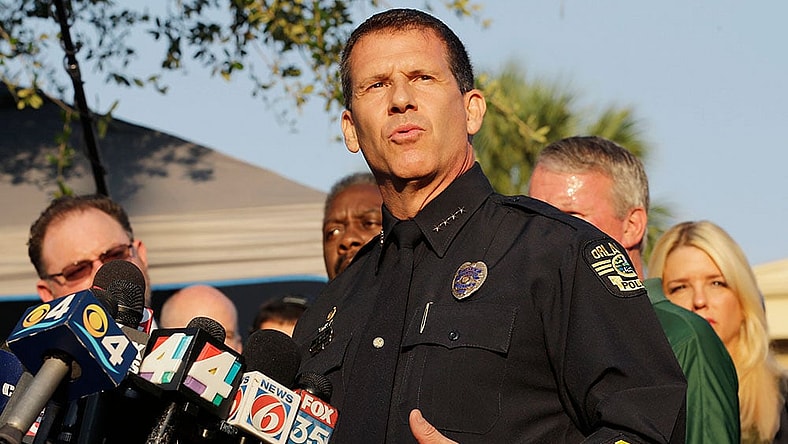5 Things To Know About the Orlando Nightclub Shooting
Here’s what we know so far.

It was almost closing time at Pulse, just after 2 a.m. on June 12, when an Orlando police officer doing off-duty security work at the gay nightclub first heard gunshots. According to the Orlando Sentinel‘s timeline of events, the officer then exchanged gunfire with Omar Mateen, a 29-year-old New York native from an Afghani family. Other officers arrived and traded shots before Mateen retreated inside the club and the deadliest mass shooting in modern American history took place. In the end, Mateen killed 49 before he died in a fierce gun battle with an Orlando SWAT team.
Here, five things we know so far about this tragedy and the hate-filled killer behind it.
Mateen was an ISIS sympathizer who had been investigated by the FBI for terror connections.
CNN and many other sources reported that Mateen was investigated by the FBI for possible terror connections in 2013 and 2014 and cleared. After the shooting, his father Seddique Mir Mateen told NBC News that the killer “saw two men kissing each other in front of his wife and kid, and he got very angry.” The mass killer called 911 after the attack began, mentioned the Boston Marathon bombers and pledged allegiance to ISIS leader Abu Bakr al-Baghdadi.
Mateen was armed with an AR-15 rifle and a handgun when he entered Pulse. He also had an explosive. Witness Brandon Wolf described the terror after Mateen opened fire inside the club to the Orlando Sentinel: “All I heard was gunfire after gunfire […] Eventually, I thought you were supposed to run out of ammunition. But it just kept going and going.”
Trapped patrons tried to reach out via text and social media.
Just after the attack began, Pulse posted this on its Facebook page: “Everyone get out of pulse and keep running.” Many trying to hide from the rampage sent harrowing texts, including accountant Eddie Justice. Hiding in a restroom, Justice texted a message of love to his mother at 2:06 a.m. A flurry of communication followed, including an exchange in which Justice said the killer had the group in the bathroom and was “fixin’ to kill” them. As the Daily Mail reported, Justice was later confirmed dead by the City of Orlando.
Mateen was abusive to his ex-wife and deeply anti-gay.
While Orlando police chief John Mina described Mateen’s assault as “organized and well-prepared,” investigators haven’t found evidence he had an accomplice. The Associated Press reported that Islamic State radio dubbed the killer “one of the soldiers of the caliphate in America” and pro-Islamic online forums praised him. Mateen’s ex-wife Sitora Yusufiy, however, said in a New York Times report that Mateen was both verbally and physically abusive and frequently expressed “his intolerance toward homosexuals.”
In spite of having been investigated by the FBI in the past, Mateen obtained the weapons he used in the attack legally. A USA Today report said the Bureau of Alcohol, Tobacco and Firearms (ATF) confirmed that Mateen obtained his AR-15 and 9 mm handgun recently and through legal methods. Since previous FBI investigations hadn’t found any conclusive evidence of terrorist connections and Mateen had never been charged with any crime, there was nothing blocking his ability to buy weapons.
A tragedy this huge has no bright spots, but at least one member of Orlando law enforcement had an incredible close call when police forces finally closed in and took the killer out:
Pulse shooting: In hail of gunfire in which suspect was killed, OPD officer was hit. Kevlar helmet saved his life. pic.twitter.com/MAb0jGi7r4
— Orlando Police (@OrlandoPolice) June 12, 2016
Firm answers to a host of questions about America’s worst mass shooting are still out of reach. However, even if Omar Mateen acted alone and as much out of bigotry as ideology, law enforcement agencies in major cities across the nation remain on high alert.
